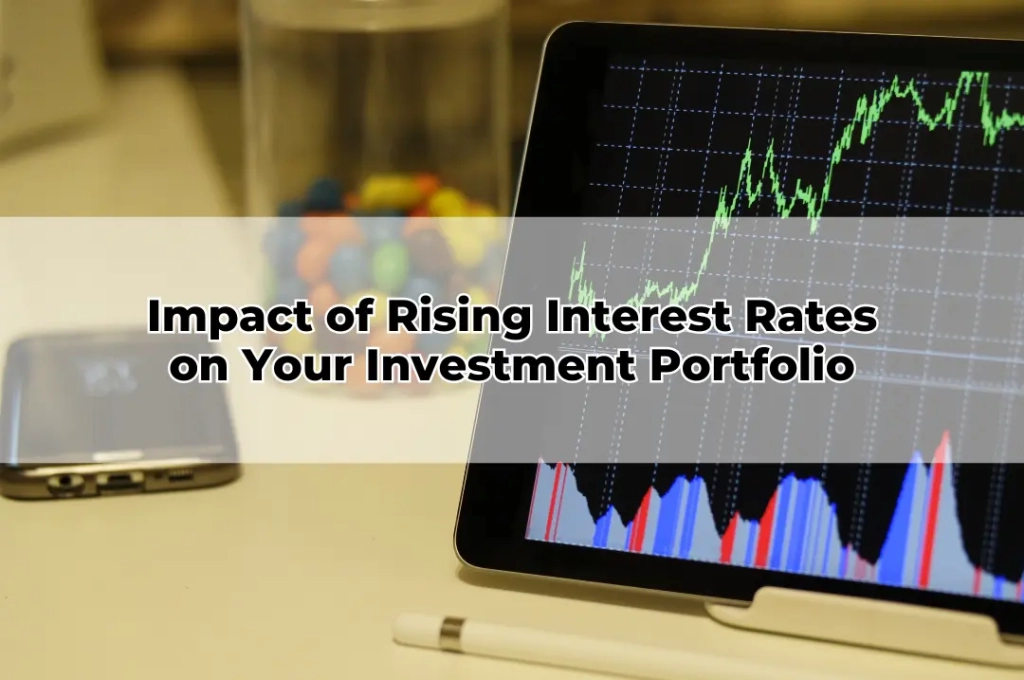Impact of Rising Interest Rates on Your Investment Portfolio
Table of Contents
ToggleAustralia’s economic fabric is constantly shifting, with the Reserve Bank of Australia (RBA) using interest rate changes as a primary tool to control inflation and stimulate or cool the economy. In recent years, a sharp rise in interest rates has signalled a fundamental turning point for investors. For those seeking strategic retirement financial advice, or navigating their way through the intricacies of wealth preservation, understanding how these rate increases impact your portfolio is more critical than ever.
Rising interest rates affect virtually every asset class – from equities and bonds to property and cash holdings. The implications are far-reaching, influencing borrowing costs, corporate profitability, consumer behaviour, and even currency valuations. For investors in Toowoomba and across Australia, a prudent, forward-looking approach must be taken. As a Toowoomba Financial Adviser, my role is to guide you through the potential pitfalls and opportunities presented by these changing financial dynamics.
The Role of the Reserve Bank of Australia in Interest Rate Adjustments
The RBA is tasked with keeping inflation within a target band while supporting full employment and economic prosperity. When inflation surges, as it has in recent times, the RBA responds by increasing the cash rate. This, in turn, affects lending rates across the board—from mortgages
to business loans.
While this mechanism is primarily aimed at stabilising the economy, it sends tremors through investment portfolios. The cost of capital rises, risk appetite diminishes, and the valuation metrics used for equities and real assets begin to shift. For investors in Financial Planning Toowoomba or those seeking guidance from an Online Financial Adviser, understanding this cause-and-effect relationship is essential.
Interest Rates and Fixed Income Securities
Fixed income investments, such as bonds, are inversely related to interest rates. When interest rates rise, the price of existing bonds generally falls. This is due to the lower yield on older bonds compared to newly issued securities reflecting the higher rate environment.
For retirees and conservative investors reliant on predictable income streams, this can be unsettling. However, rising rates also mean new bonds come with improved yields—enhancing income potential over the medium term. As part of a comprehensive retirement financial advice strategy, duration management and credit quality reassessment are vital steps in adjusting to this landscape.
Equity Markets
Rising interest rates tend to compress equity valuations, particularly in growth-oriented sectors like technology or consumer discretionary stocks. These sectors are often priced based on future earnings, which become less attractive when discounted at higher rates.
Conversely, value stocks, such as those in banking, energy, and industrials, may outperform during rising rate environments. This phenomenon is known as sector rotation. As a Toowoomba Financial Adviser, I often recommend revisiting asset allocation during these cycles, tilting towards resilient sectors that benefit from the prevailing macroeconomic conditions.
Property Investments
Australian property markets are highly sensitive to interest rate movements due to their dependence on debt financing. As borrowing costs climb, buyer demand often softens, dampening price appreciation and rental yields.
For investors with property-heavy portfolios, this creates both risks and opportunities. There may be downward pressure on valuations, but it could also lead to more favourable entry points for long-term buyers. A tailored strategy, such as portfolio diversification or debt restructuring, can help mitigate these effects while preserving capital growth objectives in Financial Planning Toowoomba.
Superannuation Portfolios
Superannuation is a cornerstone of retirement planning, and its performance is tightly linked to interest rate shifts. Whether in an industry fund or a self-managed super fund (SMSF), asset allocations within your superannuation portfolio require recalibration during rate hikes.
More defensive positioning—incorporating inflation-linked bonds, infrastructure assets, and dividend-paying equities—may help shield capital. As an Online Financial Adviser and SMSF specialist, I provide ongoing guidance to ensure your superannuation strategy remains aligned
with changing economic parameters and your long-term retirement objectives.
Cash Holdings
For years, cash and term deposits yielded minimal returns, prompting investors to chase higher risk alternatives. However, with rising interest rates, cash is no longer the idle asset it once was. Term deposits, high-interest savings accounts, and money market funds are regaining appeal.
While cash still faces inflationary erosion, its role in capital preservation and liquidity provisioning has become more prominent. For those seeking retirement financial advice, increasing exposure to cash equivalents could enhance portfolio stability, especially in turbulent markets.
Currency Fluctuations and Global Investment Impacts
Interest rate changes often have a ripple effect on currency values. Higher domestic rates can attract foreign investment, strengthening the Australian dollar. This currency movement can impact international investments, both positively and negatively.
A stronger AUD may reduce the value of unhedged offshore holdings when converted back to local currency. However, it can also lower the cost of international travel or overseas asset acquisitions. Strategic currency hedging and geographic diversification remain key pillars of global portfolio management for Australian investors.
Debt Management in a Rising Rate Environment
The impact of rising rates on personal and investment debt cannot be overstated. Higher repayments reduce disposable income and can create cash flow strain, particularly for those in or near retirement. Reviewing and refinancing debt becomes essential during these cycles.
Options include switching to fixed-rate loans, consolidating high-interest debt, or reducing leverage altogether. In Financial Planning Toowoomba, debt strategies are a core element of investment resilience. The objective is not merely survival but optimisation—ensuring financial flexibility and peace of mind.
Inflation Hedging Strategies to Consider
Rising rates often reflect an effort to rein in inflation. However, for investors, inflation erodes real returns. Hedging against this threat is a crucial part of portfolio construction.
Assets such as commodities, real estate investment trusts (REITs), and infrastructure projects offer potential inflation protection. Even certain equities—particularly those in sectors with pricing power—can serve as natural hedges. As an Online Financial Adviser, I help clients incorporate inflation-sensitive assets that align with their risk tolerance and income needs.
Adjusting Investment Time Horizons and Expectations
Market volatility often accompanies rising interest rates. As such, investor psychology plays a pivotal role. It’s essential to reset expectations and extend investment timeframes where possible. Reacting impulsively to short-term downturns can compromise long-term returns.
A disciplined approach, underpinned by regular reviews and evidence-based decision-making, provides the stability needed in uncertain times. For clients in Toowoomba seeking retirement financial advice, patience and consistency often yield superior results compared to reactive strategies.
The Importance of Professional Financial Guidance
Interest rate cycles are inherently complex. They interact with other macroeconomic variables, market sentiment, and individual circumstances. Attempting to navigate these changes without professional input can lead to suboptimal outcomes.
A qualified Toowoomba Financial Adviser can provide bespoke recommendations tailored to your goals, stage of life, and risk profile. Whether it’s restructuring a portfolio, adjusting cash flow strategies, or refining superannuation holdings, expert advice ensures you make informed decisions in a shifting landscape.
Future-Proofing Your Portfolio in an Uncertain World
Rising interest rates represent just one of many variables investors must contend with. Climate risk, geopolitical instability, technological disruption, and demographic shifts all exert influence on investment returns.
Future-proofing your portfolio requires adaptability, vigilance, and diversification. It also requires a structured approach that evolves with the economic environment. Through strategic asset allocation, proactive risk management, and a long-term lens, you can navigate the current rate cycle and emerge with a stronger, more resilient financial future.
Final Thoughts
Rising interest rates should not incite panic—they should inspire preparation. The key lies in recalibrating your portfolio to match the new environment while maintaining a clear vision of your financial goals. Whether you’re an early-stage wealth builder, a pre-retiree, or someone in
the decumulation phase of retirement, there are always strategic moves that can enhance your position.
Working with a seasoned Toowoomba Financial Adviser ensures that these strategies are not only sound but tailored to your life. If you are looking for retirement financial advice or want to consult an online financial adviser for flexible, expert guidance, Wealth Factory is here to assist. Let’s turn today’s challenges into tomorrow’s opportunities.



